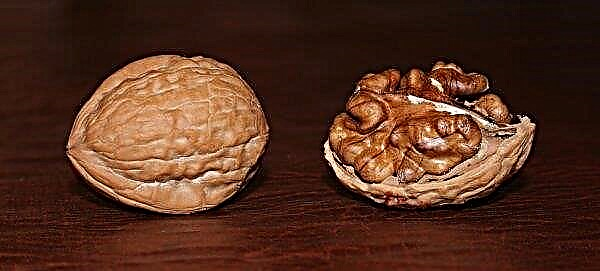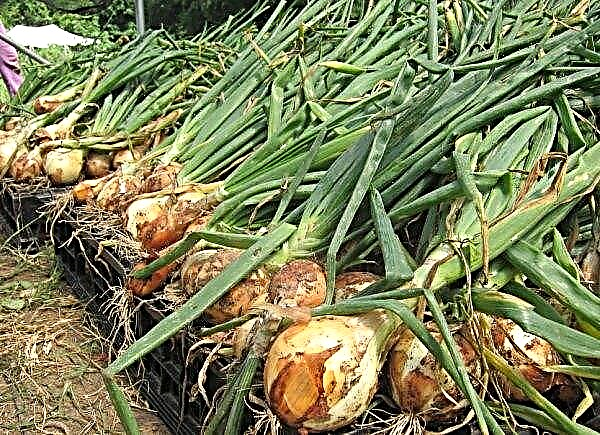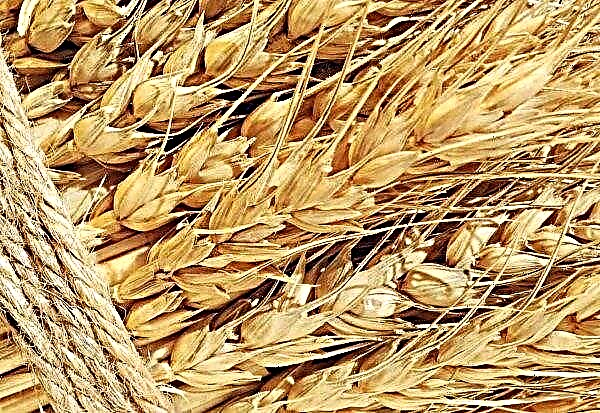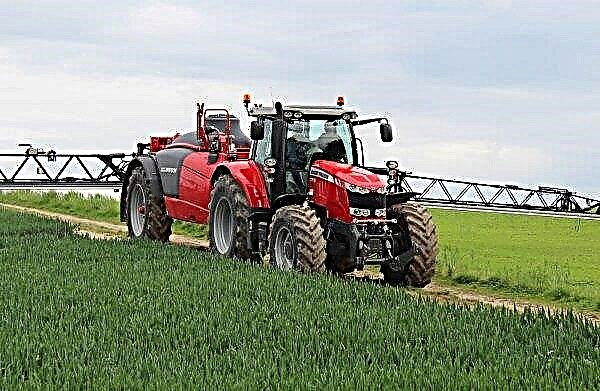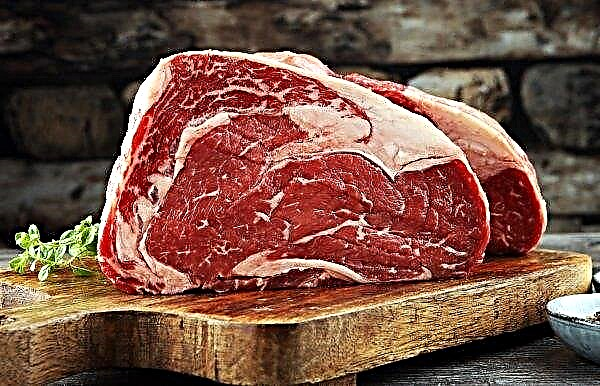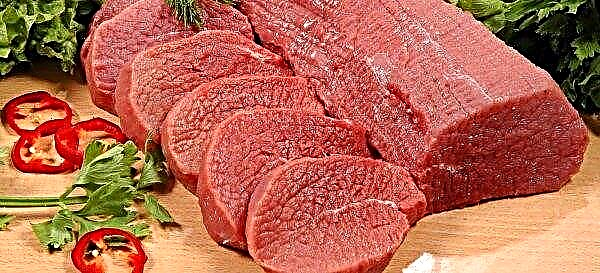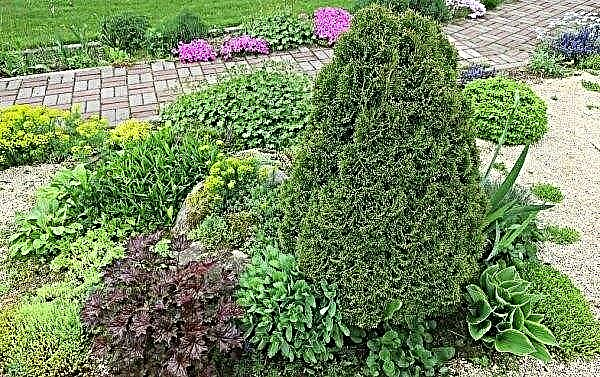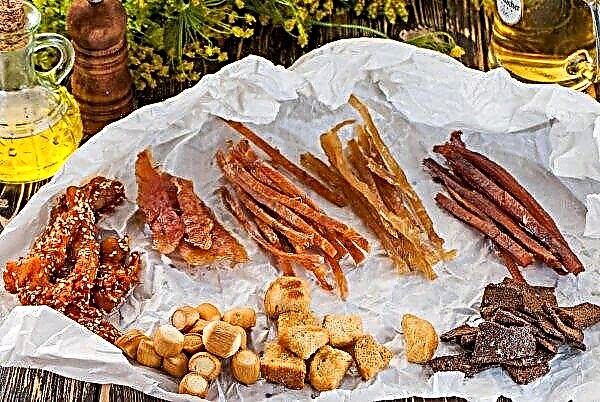It is very easy to get confused in a wide variety of onion products. And, perhaps, many find it difficult to navigate and do not distinguish what is onion and what is shallot. Let's try to fill this gap with the necessary information.
Shallot: what is it?
This vegetable has different names, including such as the shrew, the shrubbery, as well as the family onion.
Its features include:
- biennial herb with a multiglossal bulb, consisting of a different number of small onions. The nest can contain from 20 to 40 pieces, each of which weighs up to 15-30 g. The total weight often reaches up to 0.5 kg;
- the onion feather is delicate and delicate, has a mild and pleasant taste. Thanks to the juicy greens, it is most often grown, although medium-sized onions are also in demand;
- at the ends of the flower arrows spherical inflorescences grow, which consist of numerous small white flowers;
- to prevent the formation of arrows, greens must be cut without sparing. The plant has a good bushiness;
- has a wide variety of early, middle and late ripening varieties.
Did you know? During the Crusades, onions were greatly appreciated. This fact is indicated by the fact that the French exchanged their prisoners, giving 8 bulbs for each.
Early ripening varieties include:
- Sprint - A variety with a sharp taste. The nest holds 7-10 bulbs, reaching up to 40 g each. Resistant to peronosporosis.
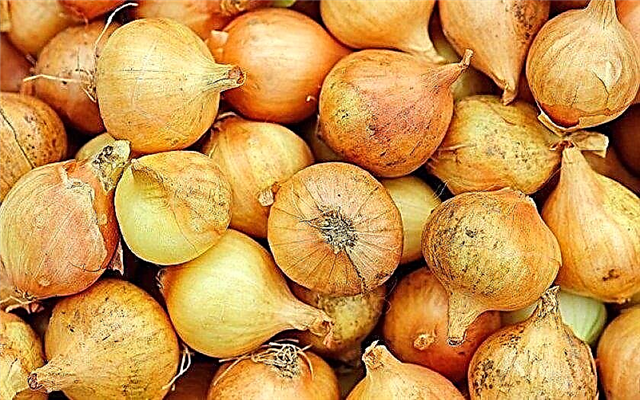
- Another owner of a pungent taste - Snowball. Ovoid fruits gain weight up to 35 g.
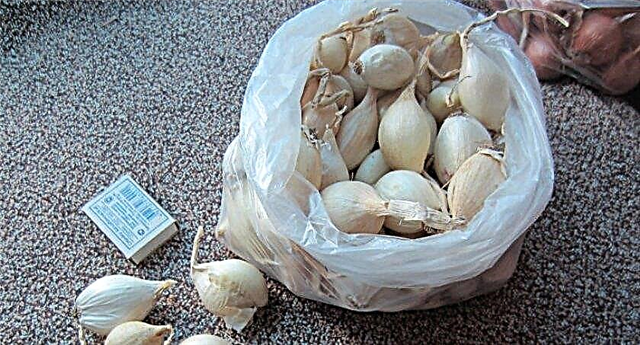
- Emerald has rounded onions, each weighing up to 30 g, collected in a nest of 5 pieces. The pulp is white, medium sharp, covered with brownish-pink scales.
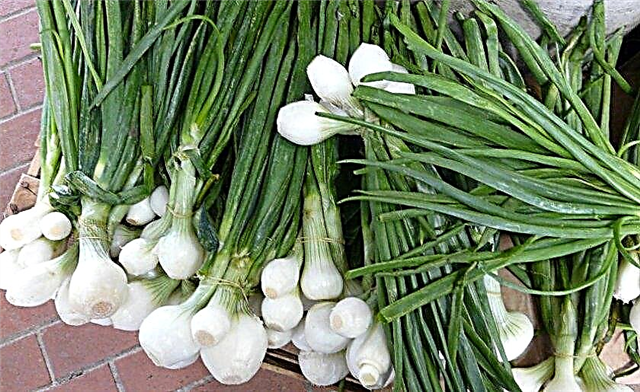
- Crop and low-grade - Cascadepungent. The onions have a wide ovoid shape and weigh up to 35 g. And the flesh and integumentary scales are pink in color.
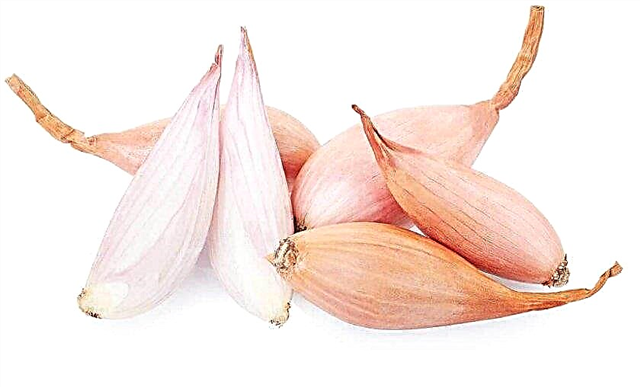
- Grade Family has a semi-sharp taste. White flesh and yellow-brown scales with a purple hue are inherent in round fruits. Up to 4 onions weighing up to 22 g matures in the bush
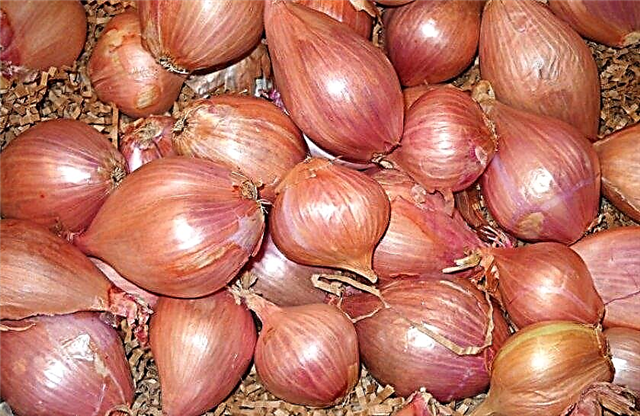
Among the varieties of medium ripening:
- Kuban yellow - peninsular and drought tolerant. Bulbs are flat, round in shape. The bush contains up to 4 onions, the total weight of which reaches 100 g. Cover scales are yellow-brown in color, the flesh is white.
- Albik differs in stable productivity and flat rounded fruits. The bush consists of 6-8 pieces, each weighing up to 30 g.
- Koynarsky onions have a semi-sharp taste. The pulp is lilac and covered with brown-pink scales. Bulb weight - up to 25 g.
- Peninsular variety Guran has in the bush up to 5 bulbs (each weighing about 25 g). Dry scales have a light brown color with a gray tint.
- Airat It has a pleasant taste of medium severity. Rounded onions weighing up to 20 g are collected in a bush of 5-6 pieces.
- Peninsular variety Firebird covered with yellow brown husk. Flattened rounded fruits gain weight up to 25-30 g.

Did you know? The sweetest of the shallots is the Banana variety. The name received due to its small resemblance to a banana.
Among late-ripening varieties are known:
- Fortress contains up to 5 bulbs in a nest from 25 to 50 g. The flesh is reddish in color, and the integumentary scales are pink. It is resistant to rot and the formation of arrows.
- Oval-elongated has a large Merneulsky grade. Its bulbs reach 50-90 g, are covered with pink-yellow scales, and the flesh is white. The nest consists of 4-6 pieces.
- Bulbs Siberian Amber covered with yellow husk. The pulp is juicy, white. Bulbs weigh up to 30 g, collected in a nest of 7 pieces.
- Vonsky the variety is resistant to many diseases and pests. The nest has 3-4 pieces each weighing 50-70 g.
What is the difference from onion?
Shallots have much in common with ordinary onions, but they also have some differences:
- a sowing planted in the ground is immediately divided, and then it is gaining mass;
- shallot multiglantus. The nest consists of several small onions;
- it is a cold-resistant culture that can withstand temperatures down to -5 ° C. Minor frost damage does not affect the yield of the vegetable;
- seeds are smaller than ordinary onions. They are able to germinate already at + 4 ° C;
- different early maturity. After July 14, the harvest is ready, while the onions have not yet ripened;
- the vegetable has good laying properties, dries and rots less than ordinary onions;
- greens are ready to eat almost until the harvest;
- when sliced, it does not cause profuse lacrimation, which is not typical for onions;
- shallots contain more vitamin C, sugars and minerals.
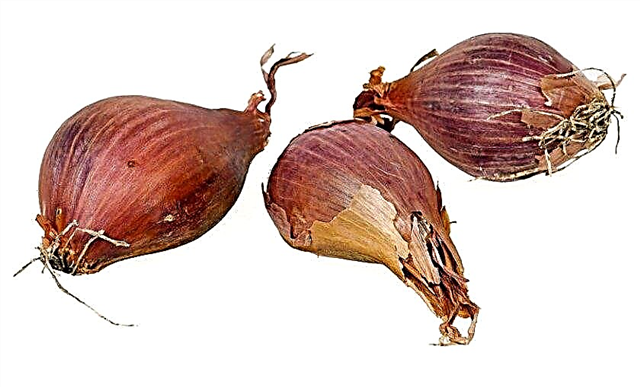
Useful properties and contraindications
- Numerous components of this product have a versatile positive effect:
- improve the activity of the cardiovascular system: normalize blood pressure, strengthen the walls of blood vessels, thin the blood. Sodium and potassium favorably affect the work of the heart;
- strengthen the immune system;
- stabilize the gastrointestinal tract. Help get rid of metabolic problems. Act as a catalyst in the breakdown of fats, and also improve their digestibility;
- thanks to carotene, the eye muscle strengthens, the condition of the retina and lens improves;
- have anti-inflammatory effect on the body;
- are the prevention of cancer;
- antioxidants inhibit cell aging and cleanse the body of toxic substances;
- optimize brain function and improve memory;
- possess wound healing and anti-burn effect.
- In addition to the large presence of "pluses", onions have a number of contraindications:
- with problems of the gastrointestinal tract and urinary system, the vegetable should be consumed in limited quantities;
- it is not advisable to use the product with high acidity of the stomach, as it can contribute to irritation of the mucous membrane;
- with diseases of the kidneys, liver and pancreas, onion intake is also better limited so as not to cause an exacerbation.
Features of growing and caring for onions
Shallot growing has much in common with onions.
Important! Shallots should be planted away from onions to prevent crossbreeding. Such precaution also eliminates the spread of common pests and diseases.
When landing, such methods are practiced:
- sowing seeds in spring - not a very popular method. Shoots need to be broken through, leaving at least 3 cm between the bushes. The disadvantage of this cultivation is the slow development of the bushes and a small amount of bulb harvest. This method is practiced if updating of planting material is necessary;
- breeding by planting seeds - the most practical way. With an autumn landing, an early harvest is guaranteed. A distance of 20 × 10 cm should be maintained between the plants. The depth of embedment of planting material in the soil depends on the size of the seed bulbs;
- bulb planting is acceptable in springbut the harvest will be a little later than when planting in the fall.

When cultivating this vegetable, you need to remember some features:
- with prolonged cultivation in one place (more than 10 years), the culture begins to degenerate. But this feature applies mainly to farmers, for summer residents it is not so relevant;
- spring planting prevents shooting (arrows form about 10% of plants), while autumn planting is accompanied by abundant growth of arrows (about 50% of bushes);
- shallots are smaller than onions. Full seeds ripen on plants with a bulb weight of at least 50-60 g. Seed consumption is about 0.6 g / m².
Agricultural technology of culture is as follows:
- fertile and loose soil having a pH of about 6.5-7 is preferred;
- a good place to grow vegetables is the beds on which any legumes, potatoes, tomatoes or cucumbers previously grew;
- every 3-4 years, a change of growing place is needed;
- with autumn plowing, fertilizer in the form of humus can be applied (about 4-6 kg / m²);
- before spring planting in the process of deep digging, it is advisable to introduce superphosphates (20 g / m²), and ammonium nitrate (15 g / m²) and calcium chloride (15 g / m²);
- a favorable temperature for growing is about + 20 ° C, but the plant is able to tolerate a decrease to -5 ° C;
- bulbs with a diameter of about 2.5 cm and a weight of up to 10 g are selected for planting; Consumption of seed - approximately 250 g / m²);
- the distance between adjacent beds is about 20 cm, and between plants - up to 7-10 cm. The depth of planting depends on the variety, but is in the range of 4-5 cm.
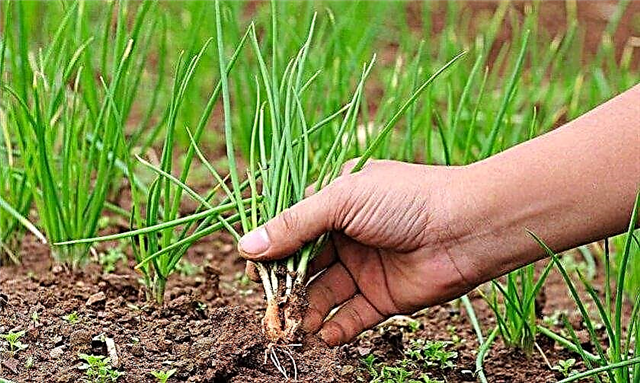
Cultural care consists of a standard set of activities:
- During the growing season, you need to carry out two dressings. The first is practiced when friendly seedlings appear (approximately 2 weeks after planting) by introducing a mullein solution (1:10). Consumption - about 1 bucket / m². Organic matter can be replaced with mineral components in the form of equal parts of superphosphate and ammonium nitrate (10 g per 1 m²). The second top dressing is carried out during the period of bulb formation. For it, you need to take 15 g of potassium chloride and superphosphate per 1 m².
- About 3 weeds should be made per season to remove weeds. Plants respond well to loosening the upper soil layers.
- The number of irrigations is adjusted depending on weather conditions.. In rainy weather, watering may not be necessary, and in land you need at least three good humidifications (15-20 l / m² each).
Video: shallot farming
Possible diseases and pests
Shallot can be threatened by such diseases and pests:
- cold and damp - Favorable factors for the occurrence of powdery mildew, peronosporosis, rot or fusarium wilt. Affected bushes are removed from the garden, and healthy bushes are treated with a solution of "Quadris", "Mikosana", or "Pentophage" according to the instructions;
- for the prevention of fungal diseases, before planting the bulbs can be placed for half an hour in a solution of the drug "Maxim";
- onion plantations are often affected by an onion fly. Such plants begin to fade and rot. To protect against the pest, dusting with wood ash is used. If larvae are found, the bushes should be treated with a salt solution (1 glass per 10 liters of water);
- onion nematode It affects the mother's bulbs, which, falling on the beds, contribute to the infection of other plants. Such planting material should be held for several minutes in a 4% formalin solution;
- against aphids, affecting the green mass, "Verticillin" or folk remedies in the form of chamomile broth, pepper or potato peelings are used.
Important! After using toxic drugs, it is forbidden to immediately use onions for food. The term action of toxins is indicated in the instructions.
Where is shallot used?
Earlier it was said about the beneficial properties of this vegetable. Thanks to numerous "pluses" it is used in various fields.
In folk medicine
Shallot is used to treat many diseases:
- volatile drugs have a beneficial effect in purulent diseases. In the common cold, tampons moistened with onion juice are placed in the nostrils for 4-5 minutes. Onion gruel is used for inhalation in tonsillitis or diseases of the bronchi and lungs. A mixture of gruel with goose fat is used to rub the chest when coughing;
- with vitamin deficiency it is useful to use any variety of shallots fresh. 150 g of vegetable provide a daily intake of vitamin C and A;
- using rubbing the skin with onion juice, you can get rid of freckles and age spots. But before that, you need to make sure that this does not cause an allergic reaction;
- inhalation of onion smell Helps relieve headaches
- a decoction of the husk eliminates dandruff, gives the hair shine and a healthy look. For the broth, 200 g of onion peel is used, which is poured with a liter of water and boiled for 5-7 minutes. Warm broth is filtered and used to rinse hair.
In cooking
The gentle taste of shallots is appreciated all over the world. The food uses both green onion leaves and bulbs. Shallot is more fragrant, juicier and softer than onions. It is used both fresh and processed. Adding this vegetable to dishes gives them an unusual twist. It is contained in vegetable salads, first courses, various marinades, egg and fish dishes. This onion is good for giving a peculiar taste to sauces and gravy. A delicious combination is obtained by adding red wines and olive oil. An unusual taste is obtained by pickling a vegetable in red vinegar. A good combination of onions with various seasonings and spices (parsley, pepper, ginger, dill and others). Shallots were most widely used in French and English cuisine.
A delicious combination is obtained by adding red wines and olive oil. An unusual taste is obtained by pickling a vegetable in red vinegar. A good combination of onions with various seasonings and spices (parsley, pepper, ginger, dill and others). Shallots were most widely used in French and English cuisine.
Did you know? Iranians serve shashlik shallot sauce with yogurt. And in China, chips from this onion are in great demand.
Shallot is less popular than onions, although it is in no way inferior to it, and in many ways even surpasses it. Therefore, we hope that after reading the article you will pay attention to this wonderful and undeservedly forgotten vegetable.










